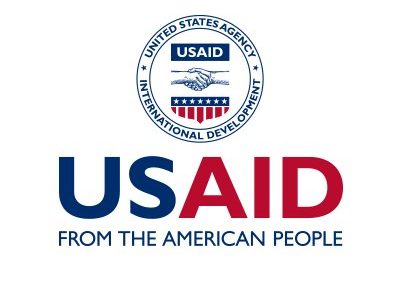The United States, through the U.S. Agency for International Development (USAID), is providing an additional $488 million in critical humanitarian assistance to the people of Ethiopia as an historically unprecedented drought threatens the survival of more than 8.1 million people. Communities across southern and southeastern Ethiopia are experiencing the worst effects of the four back-to-back drought seasons. Farmers are experiencing widespread crop losses and 2.5 million livestock deaths have been reported – a significant loss in sources of food and income.
In some drought-affected parts of the country, armed conflict is limiting access to food and income, while the rising cost of food, fuel and fertilizer exacerbated by Russia’s unprovoked and unjustified invasion of Ukraine is making it more difficult for families to afford the essentials they need. Many Ethiopians are still grappling with the devastating effects of the COVID-19 pandemic and recent desert locust infestations. For children, the drought is taking a toll on their ability to get an education as nearly 650,000 children are out of school, and more than 2,000 schools closed due to lack of water. In some drought-hit areas, recent reporting shows a 51 percent increase in child marriage as families try to cope, reversing decades of progress made in combating child marriage across Ethiopia, according to the United Nations Children’s Fund.
With today’s announcement of more than $488 million in humanitarian assistance, USAID partners will meet urgent needs for 4.8 million people across Ethiopia. This includes:
Emergency food assistance for millions of people, staving off starvation – As an estimated 7.4 million people are in need of immediate food assistance, new funding will provide sorghum – a more readily available grain than hard-to-import wheat – yellow split peas, and vegetable oil for families living in areas where local markets are not functional. Where markets are functional, USAID will provide cash for Ethiopians to purchase food staples from local markets, supporting the local economy and ensuring families facing starvation get what they need.
Life-saving nutrition to treat malnourished children – More than 4.7 million children under five years of age are projected to experience malnutrition this year alone. To save lives and prevent further deterioration, USAID will provide community-level screening to support early detection of moderate and severe acute malnutrition in children. In detected cases, USAID funds will supply specialized peanut-based, and corn-soya blend nutritional supplements to treat 1.6 million moderately and severely malnourished children at hospitals, health centers, and mobile clinics.
Support for farmers to prevent crop and livestock losses – To keep livestock alive and healthy, USAID funding will provide veterinary services, animal fodder, and supplements to allow animals to continue breeding despite deteriorating conditions. This funding will also provide farmers with seeds, tools, and training in drought-resistant farming methods to increase crop productivity amid worsening drought conditions.
Support for populations, farmers, and agribusinesses to build resilience – USAID will build household, community, and domestic agricultural system capacity to manage future shocks and stresses, support agribusinesses to increase productivity and offset reliance on imports, rehabilitate water points to expand water availability, expand fertilizer finance and investment to increase availability and lower costs, and improve access to irrigation and agricultural inputs to diversify and expand crop and fodder production. This additional support will build and expand upon USAID’s food security assistance through Feed the Future.
Safe drinking water and emergency health care to prevent disease exacerbated by hunger – More than 4.4 million people in Ethiopia lack access to drinking water in drought-affected areas of Ethiopia. USAID is providing safe drinking water to keep people healthy and prevent disease outbreaks often prevalent during drought, including: safe, potable water through water trucking; repaired water boreholes, community wells and distribution systems; materials to test and treat contaminated water; and technical support for community-led experts responsible for managing water and sanitation infrastructure. USAID is also expanding access to basic health services, rehabilitating health facilities to ensure adequate treatment, and sending mobile health and nutrition teams to provide medical supplies and treatment in rural areas.
Protection for women and children to prevent gender-based violence – The drought has resulted in widespread displacement for many Ethiopian families, leaving them vulnerable to sexual violence as they flee the safety of their homes. USAID is providing medical supplies, healthcare, and psychosocial support for survivors of gender-based violence and exploitation often intensified during crises such as drought. This includes specialized training for healthcare staff to mitigate gender-based violence, alongside the creation of safe spaces and counseling for women and girls with a special emphasis on communities displaced by the drought, as well as child protection services and family reunification assistance.
With this announcement, USAID has provided more than $668 million in humanitarian assistance for the Ethiopia emergency drought response in FY 2022 – the greatest share of all donor funding for this crisis to date by far. But it is insufficient to help all the people in need. The United States has stepped up to meet the majority of immediate funding gaps to save lives now, but it is imperative that the Government of Ethiopia, other donors, and international partners join us to help prevent significant loss of life and meet expected humanitarian needs into 2023.
A portion of this $488 million in funding for Ethiopia is included in the additional Ukraine supplemental and is part of the $2.76 billion in USAID assistance announced by President Joe Biden on June 27, 2022. It is being programmed immediately to address the most dire impacts of the global food security crisis and historic drought in countries with high levels of acute food insecurity, reliance on Russian and Ukrainian imports, and vulnerability to price shocks.

